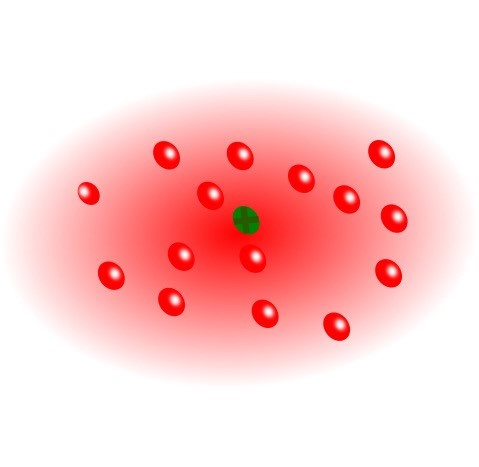Mobile ion in a fermi sea
New publication in PRA by Esben Rohan Christensen, Arturo Camacho-Guardian and Georg M. Bruun who investigate what happens when an ion is immersed in a fermi sea.

Mutual inspiration and interplay amidst the constituent groups of CCQ has once again led to an interesting study. Inspired by the remarkable experimental advances in manipulation of individual ions, nicely shown by the group of Michael Drewsen, along with the ability to study neutral impurities in ultracold atomic gases, exemplified the group of Jan Arlt, Christensen et al. study what happens if an ion is immersed in such a quantum environment. Their previous study investigated the static- and dynamic properties of an ion in a Bose-Einstein condensate. Now, the authors study the appealing set-up of an ion immersed in a fermi sea, where the Pauli exclusion principle suppresses three-body loses providing a promising platform for observation of interesting and stable quantum states.
By calculating the full spectral response of the ion in the fermi sea, the authors show that there are several quasiparticle branches corresponding to ionic Fermi polarons with properties quite different from their neutral counterpart, including simultaneous presence of several stable polaron branches and the smooth transition from repulsive to attractive polarons with increasing interaction strength. Remarkably, the quasiparticle spectral weight of the attractive polaron is demonstrated to increase with increasing Fermi density and to remain nonzero in the so-called BEC limit, in stark contrast with the case of the neutral attractive polaron.
These results illustrating rich physics, should be readily observable in atom-ion hybrid experiments, and indeed several experimental groups around the world are working with just these systems. The paper also paves the way for interesting paths in future works, for instance the problem of induced interactions between two ions mediated by density oscillations in the surrounding medium. An accurate way to measure such induced interaction could be to measure its effects on the phonon modes of ions confined in a Paul trap, which is also relevant for the experimental groups in CCQ. This means full circle in terms of reciprocal inspiration between groups of CCQ and surely this mechanism will continue to stimulate interesting results in the future.
Read the full paper at https://journals.aps.org/pra/abstract/10.1103/PhysRevA.105.023309
